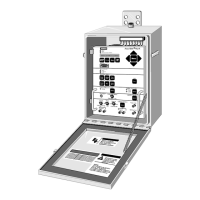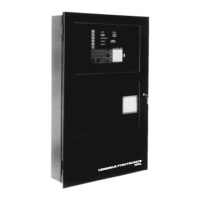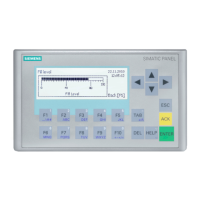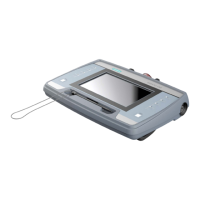Siemens Industry, Inc. 95
Figure 1 - Tap Change Controller
When an automatic or pseudo-manual (remotely requested) tap change begins, the J or K output is turned on and the
timer for the R/L On Time is started. The J/K output is turned off when the R/L On Time expires or a tap change is
sensed, whichever occurs first. Note that R/L On Time specifies the maximum time the J/K outputs will remain on
during a single tap change. The Tap Change Timeout timer begins when R/L On Time is completed if a tap change
has not yet been sensed. If a tap change has still not been sensed by the end of the Tap Change Timeout timer, a
“Tap Track Err” will be generated. When a tap change is sensed or a tap change timeout occurs, another timer is
started for the R/L Off Time. Subsequent tap changes will not be started until this timer expires
Signal Timing Flexibility
The important timing parameters related to tap control and tap tracking are configurable. There are ten
configurable items and they are located in the <Diagnostic> menu. They are as follows
Specifies how long to turn on the R/L (J/K) signals to effect
a tap change.
Specifies how long to keep the R/L off between tap changes
– provides duty cycle control.
Specifies how long to wait for a tap change to be sensed
before declaring a Tap Track Err.
Specifies which input to use for operations count/tap
tracking
Specifies what the tap input signal does for each tap change
Specifies pulse time if Tap In Type is “pulse”.
Time prior to tap change to sample voltage for voltage-
change direction monitoring
Time after tap change to sample voltage for voltage-change
direction monitoring
(if timeout occurs before

